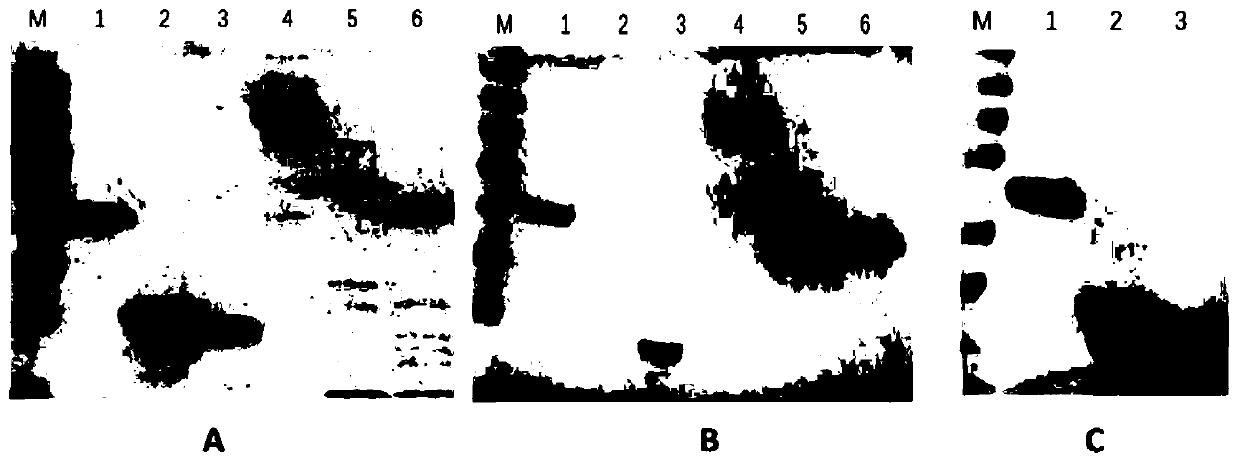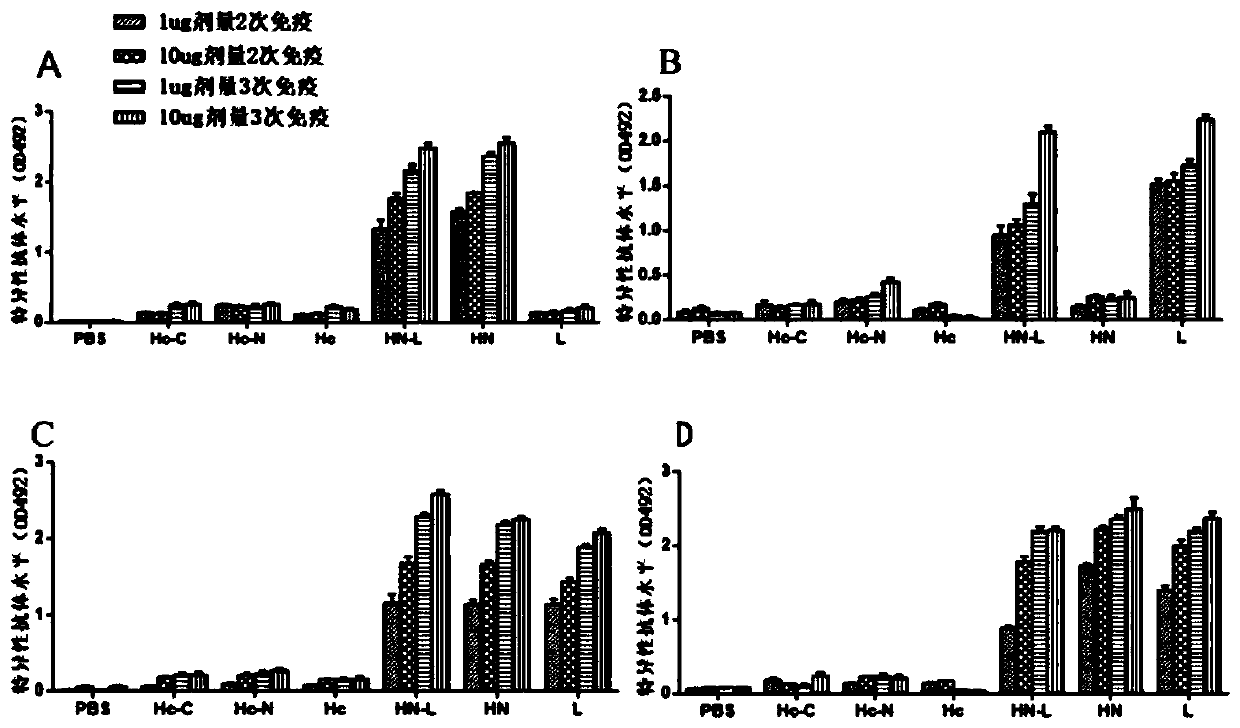Preparation method and application of E type botulinum toxin recombinant HN-L antigen
A botulinum toxin and antigen technology, applied in the direction of recombinant DNA technology, bacterial antigen components, chemical instruments and methods, etc., can solve the problems that cannot be popularized and applied, and achieve the effect of strong immune activity
- Summary
- Abstract
- Description
- Claims
- Application Information
AI Technical Summary
Problems solved by technology
Method used
Image
Examples
Embodiment 1
[0051] Example 1. Expression, purification and identification of recombinant antigens with functional epitopes of type E botulinum toxin in Escherichia coli
[0052] 1. Gene design and synthesis of each functional epitope antigen of botulinum toxin type E
[0053] According to the codon degeneracy, the genes encoding the functional epitopes of E-type botulinum toxin were artificially optimized and synthesized, and first cloned directly into the pMD18-T vector (TaKaRa) and named as pMD18-L, pMD18-HN, pMD18-HN- L, pMD18-Hc, pMD18-Hc-C, and pMD18-Hc-N encode L, HN, HN-L, Hc, Hc-C, and Hc-N, respectively (see Table 1 for detailed antigen and sequence information). When cloning these artificially synthesized genes, in order to facilitate the following operations, the 5' end of each functional epitope antigen gene was introduced into EcoR I and the 3' end introduced the Xho I restriction recognition site.
[0054] The above gene design adopts the codons commonly used in Escherichia...
Embodiment 2
[0067] Example 2 Detection of Antibody Levels and Protective Effects on Type E Botulinum Toxin After Immunizing Mice with Various Functional Epitope Antigen Proteins in the Carboxy-terminal Structural Region of the Heavy Chain of Botulinum Toxin Type E
[0068] The recombinant antigens prepared in Example 1 above were immunized into mice respectively, and their immunogenicity and protective properties were tested. The specific method is as follows: Balb / c mice (6-8 weeks, female, SPF grade, purchased from the Experimental Animal Center of the Military Medical Research Institute) were randomly divided into groups, with 8 mice in each group, and the immunization dose was 1 μg or 10 μg per mouse, respectively. Antigen protein, each antigen protein in the combined group was half and half, while the negative control group was immunized with PBS not containing recombinant protein, and aluminum adjuvant (Alhydrogel) with a final concentration of 1mg / ml TM 2.0%, Bom Tai (Brenntag Bios...
Embodiment 3
[0078] Example 3: Detection of Antibody Levels and Protective Effects on Type E Botulinum Toxin After Immunizing Mice with Various Functional Epitope Antigen Proteins in the Heavy Chain N-Terminal-Light Chain Structural Region of Type E Botulinum Toxin
[0079] The immunization scheme for the epitope antigen protein of the N-terminal of heavy chain of type E botulinum toxin-light chain structural region is the same as that of Example 2. Table 3 and image 3 The results shown show that HN, EL and HN-L antigens were immunized with 1 and 10 μg doses for 2 and 3 times, and each recombinant antigen produced an antibody response only against itself, without other cross-antibody reactions. Different doses and times of immunization in each immunization group produced protective responses, and also showed a dose-positive correlation. However, it is worth noting that the protective effect of the HN-L antigen was higher than that of the HN and L groups, especially at low doses. At the ...
PUM
 Login to View More
Login to View More Abstract
Description
Claims
Application Information
 Login to View More
Login to View More - R&D
- Intellectual Property
- Life Sciences
- Materials
- Tech Scout
- Unparalleled Data Quality
- Higher Quality Content
- 60% Fewer Hallucinations
Browse by: Latest US Patents, China's latest patents, Technical Efficacy Thesaurus, Application Domain, Technology Topic, Popular Technical Reports.
© 2025 PatSnap. All rights reserved.Legal|Privacy policy|Modern Slavery Act Transparency Statement|Sitemap|About US| Contact US: help@patsnap.com



